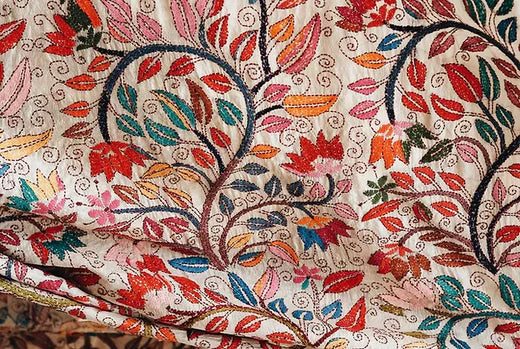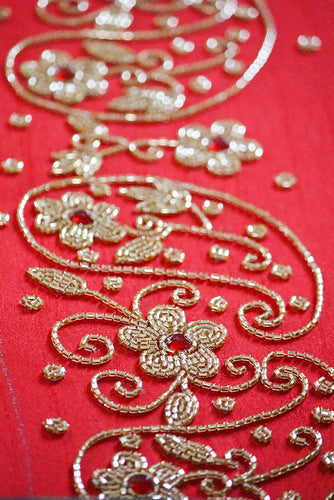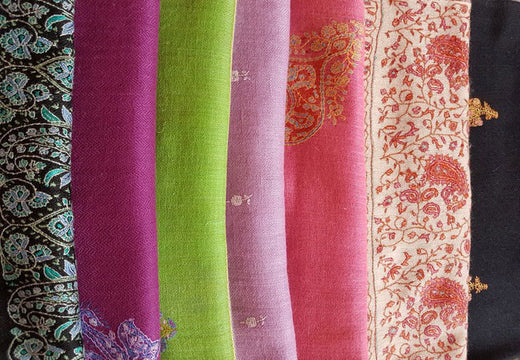
KANTHA EMBROIDERY
Kantha, a popular style of embroidery that comes from West Bengal, is a significant symbol that displays the skill and talent of the rural women in Bengal. Kantha, which basically means ‘throat’, is associated with Lord Shiva. The story revolves around how Lord Shiva consumed poison while stirring up the ocean, and therefore the significance of this word goes all the way back to the Vedic times. This type of stitch is basically the ‘running’ stitch, and is very simple. Traditionally this embroidery was used for quilts, dhotis and sarees, but over a period of time it has evolved and made its way right into the heart of Indian fashion. The yarn is taken from old saree borders; the design is then traced and finally covered `with running stitches. Today this kind of embroidery can be found on shawls, pillow covers, dupattas, and home furnishings as well.
Day to day life was the biggest source of inspiration behind this craft. The motifs designed on clothes or bed spreads were of birds, animals, folk scenes, fishes and imagery that depicted different views of livelihood for the people living in Bengal. Reprocessing was another form of motivation, since initially women recycled their old clothes and turned them into something more practical, like covers for furniture, or blankets.
There are 7 different types of Kantha stitches. The first kind is the Lep Kantha, which is used to make warm, padded quilts. Then there is the Sujani Kantha which is used to make bed covers for ceremonial occasions. Baiton Kantha is used on covers meant to wrap books and other precious objects. Kantha work has been around for ages and has been favorite amongst those who love taking fashion and style to levels beyond the ordinary. Conventionally, the motifs used were of animals or birds, but now with modern-day designers, experiments in designs are also being done. One can see cave art, Egyptian murals, Hindu mythology and even pop art being illustrated through this fine stitch work.
One can accessorize it, however, and not worry about going wrong since this kind of embroidery is adaptable to any occasion. Maintaining the quality of a kantha blanket or even a kantha saree is not complicated. Any special trick of the trade is not required to keep it in a good condition. Normal hand or machine wash would be adequate and would not ruin the longevity of the fabric or embroidery.





